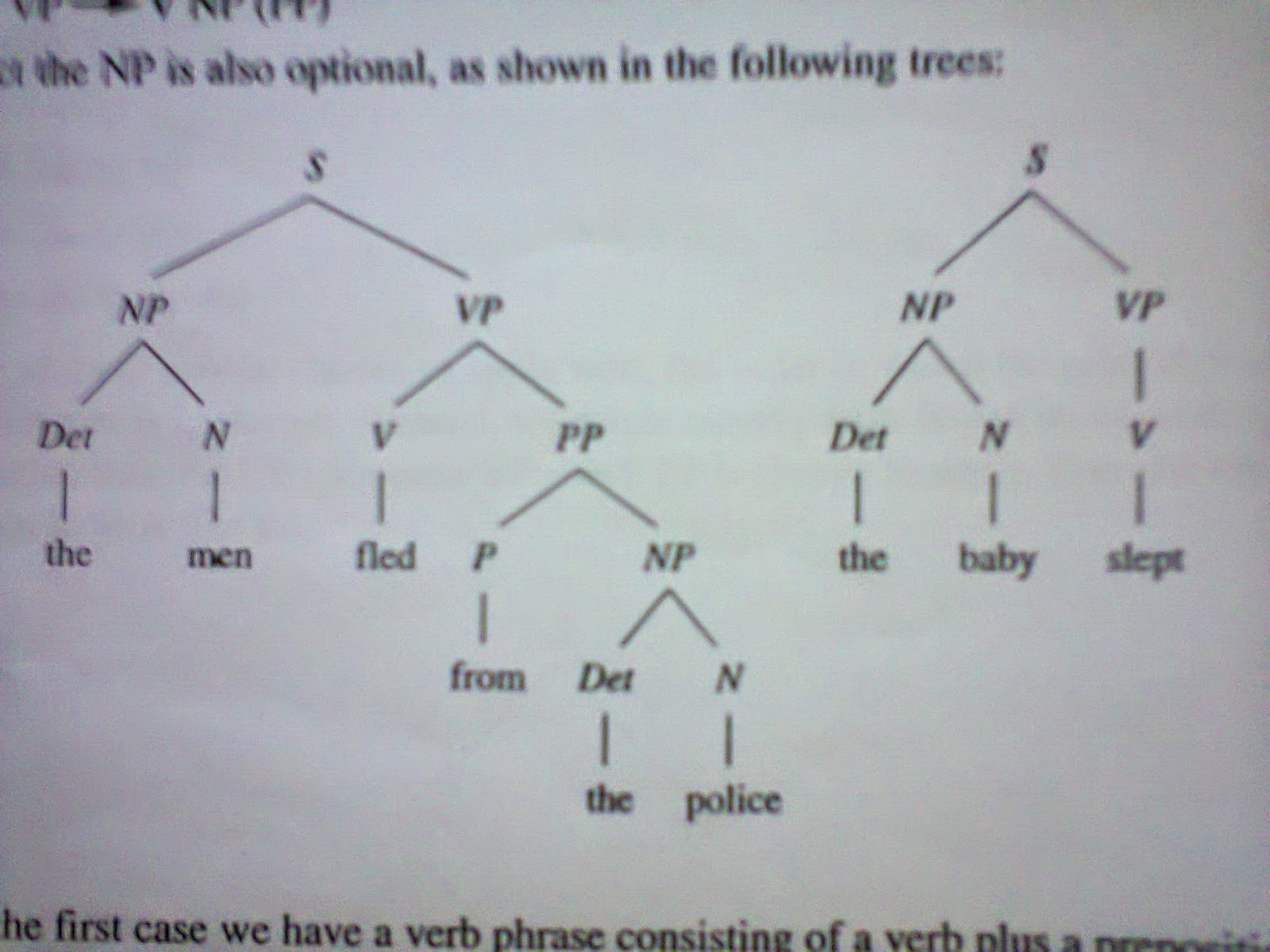Michaelis
A phrase structure tree is a formal device for representing speaker knowledge. When we speak we are not aware that we are producing sentences with such structures, but controlled experiments show that we use them in speech production and comprehension. We dom't use the tree structure diagrams per se, but we are unconsciously aware of structures on which these trees are based.
When we look at other phrase structure tree representations of English, we see certain patterns emerging. In ordinary sentences, the S is always subdivided into NP and VP. NPs generally contain nouns; VPs always contain verbs; PPs consist of a preposition followed by a noun phrase.
Of all logically possible tree structures, few actually occur, just as all word combinations do not constitute grammatical phrases or sentences. For example,
a-nonoccurring tree structure in English is :
Both grammatical and ungrammatical trees must be accounted for in the grammar. Again, some kind of formal notation is required, preferably one that reveals speakers knowledge percisely and concisely. To do this, linguists write grammars that include phrase structure rules that specify the constituency of syntactic categories in the language.
For example, in English a noun phrase (NP) can be a determiner (Det) followed by a noun (N). Thus, one of the several allowable NP subtrees looks like this :
The phrase structure rule that makes this explicit can be stated as :
NP -- Det N
This rule conveys two facts :
A noun phrase can be a determiner followed by a noun.
A determiner followed by a noun is a noun phrase
The left side of the arrow is the category whoose components are defined on the right side. The right side of the arrow also shows the linear order of these components. Phrase structure rules make explicit speakers knowledge of the order of words and the grouping of words into syntactic categories.
The phrase structure trees of the previous section show that the following phrase structure rules are part of the grammar of English.
- VP --- V NP
- VP --- V NP PP
Rule (1) and (2) can be summed up in one statement : a verb phrase may be a verb followed by a noun phrase, which may or may not be followed by a prepositional phrase. By putting parentheses aruond the optional element, we can abbreviate rules (1) and (2) with a single rules :
VP --- V NP (PP)
In fact the NP is also optional, as shown in the following trees :
In the firs case we have a verb phrase consisting of a verb plus prepositional phrase, corresponding to the rule VP --- V PP. In the second case, the verb phrase consists of a verb alone, corresponding to the rule VP --- V. All the facts about th verb phrase we have seen so far are revealed in the single rule :
VP --- V (NP) (PP)
This rule states that a verb phrase may consist of a verb followed optionally by a noun phrase and/or a prepositional phrase.
Other rules of English are :
S--- NP VP
PP --- P NP


